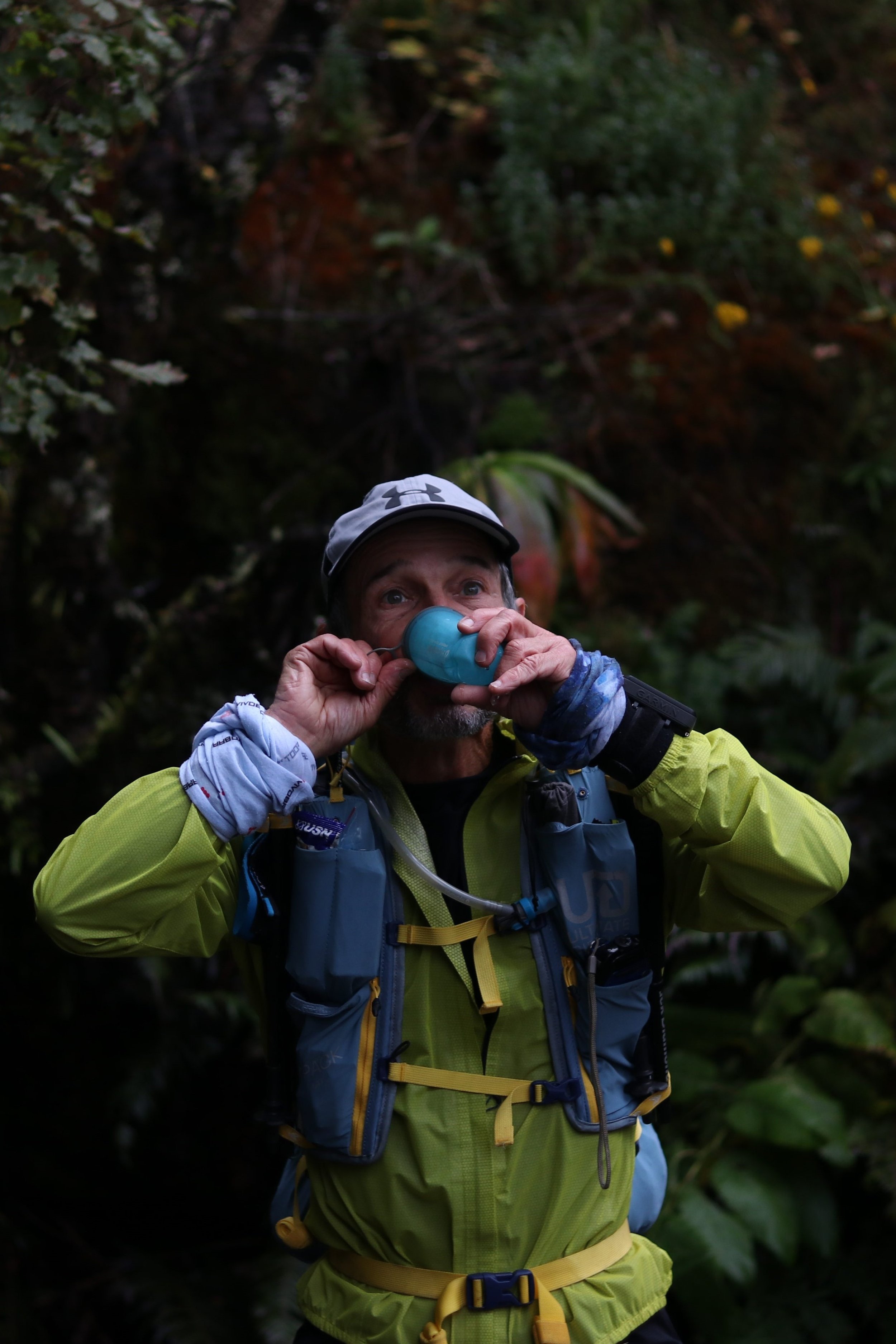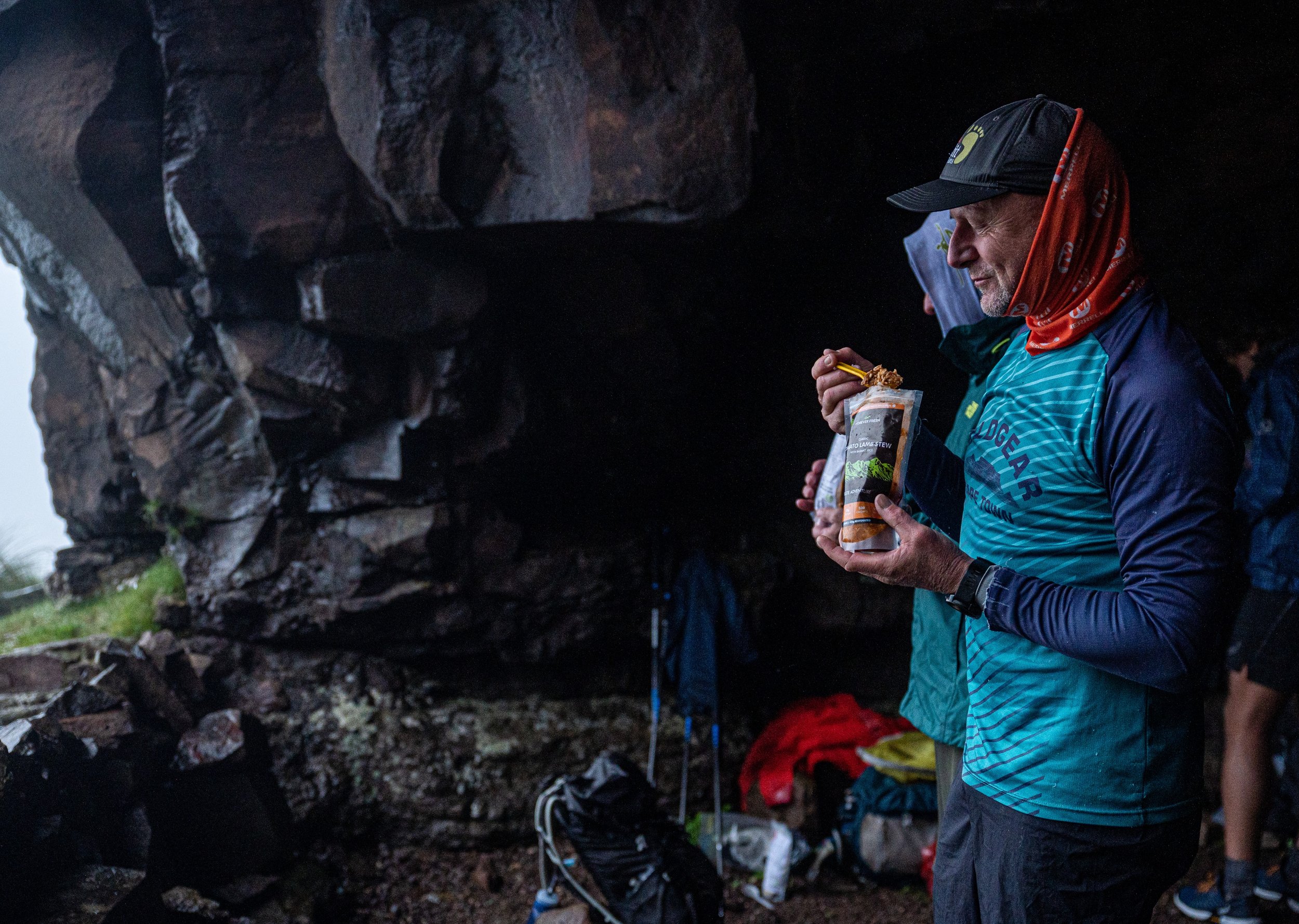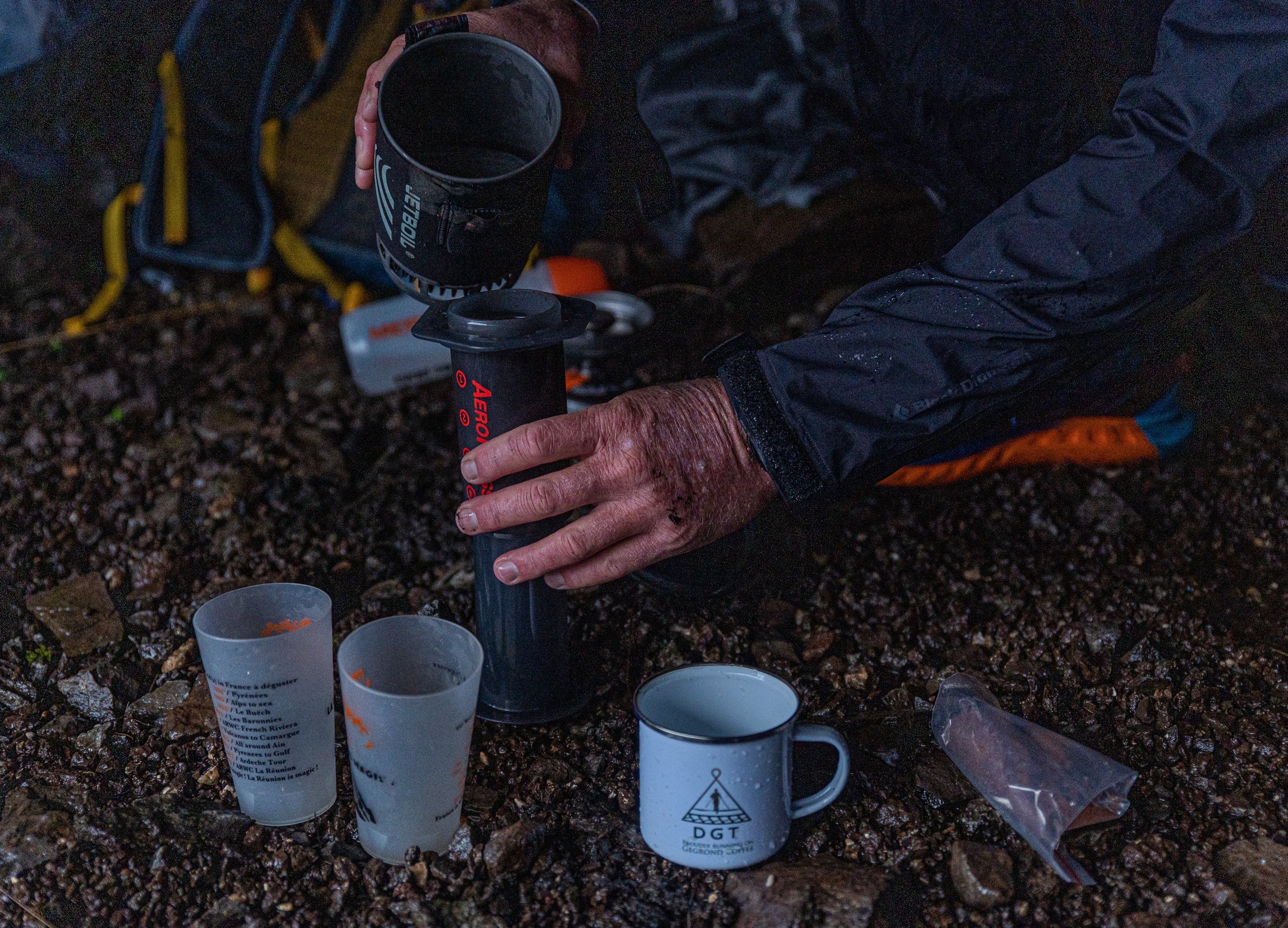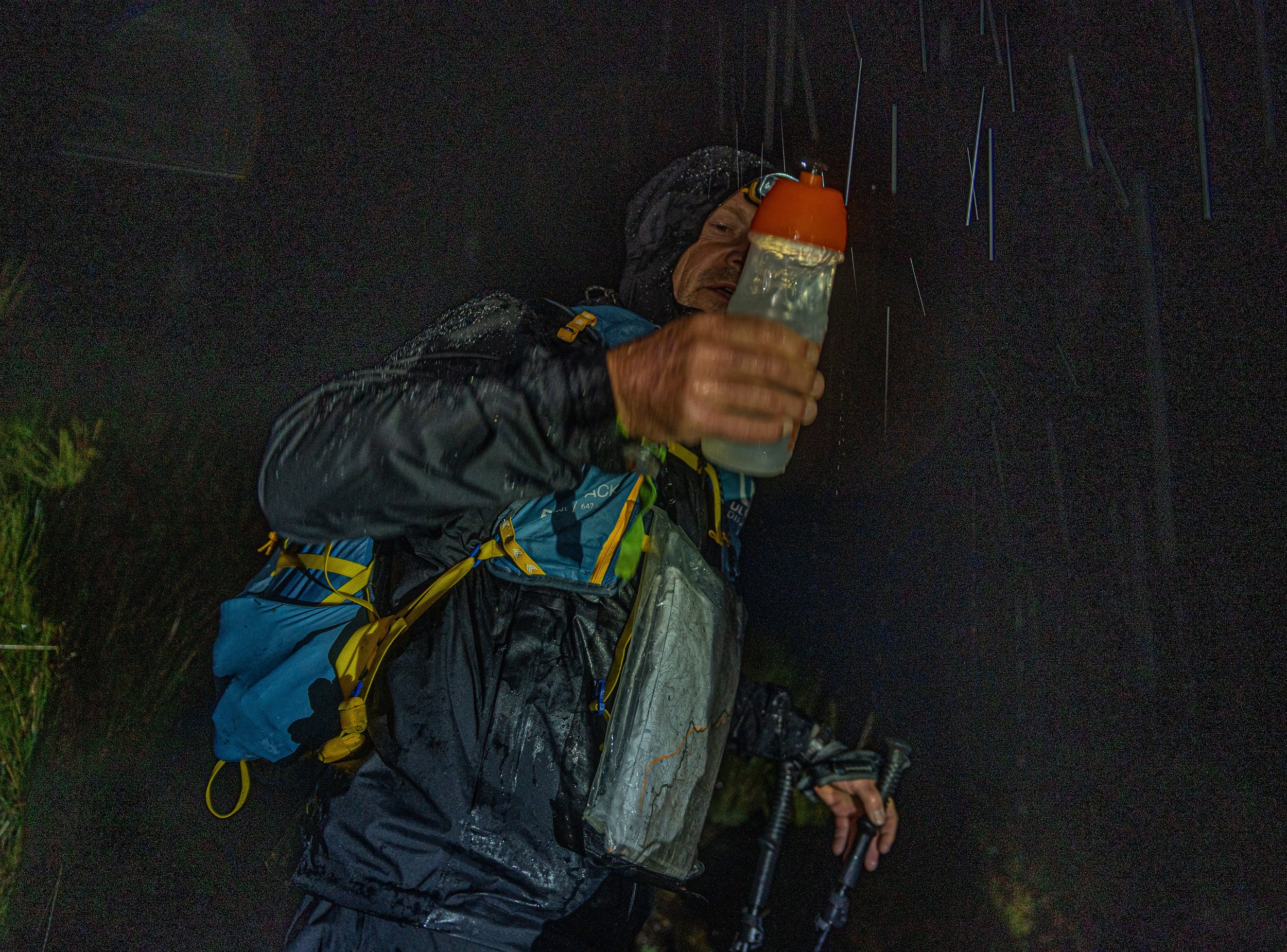Fuel for Thought
Nutrition and hydration considerations for a DGT Run…
As every endurance athlete knows, proper nutrition and hydration are key to success in racing. But how do you approach this on a race like no other - a 200km, non-stop and almost unsupported footrace across the Drakensberg? Should you count calories, milligrams of sodium and litres of fluid consumed per hour? Should you use gels and high-carb sports drinks? Or should you focus on maintaining a normal meal plan and consuming real, wholesome foods for your time out in the mountains? Both options obviously have their pros and cons, so let's delve into the rationale behind your possible choices…
The first thing to keep in mind throughout your planning process is that you will have to carry about 160 kilometres worth of nutrition with you, all the way from the starting point to the one and only aid station and drop bag at Sani Road. There you will be able to restock for the last 50 odd kilometres, but you’ll have to complete an unsupported hundred miler first… Crossing the northern and central Drakensberg escarpment with all your nutrition on your back means that both the weight and size of the foods and drinks you choose to pack are going to affect your average speed. Basically, lighter and more compact, energy-dense items should be prioritised over low-calorie, bulky or heavy foods. This points towards powdered drinks and dehydrated foodstuffs which simply require the addition of water. But for how many days can you “drink your food” and are you going to rehydrate your meals with cold water, or carry a cooking system of an extra 500 grams? The answer depends on how many hours or days you’re expecting your DGT to take, but I know that none of these options would work for me…
Hydration is generally more important than nutrition, but the sustained high altitude of the DGT is going to make fluid intake even more critical than usual. The drier air and your increased respiratory rate at higher elevations means more fluid is lost through expiration (moisture lost from your respiratory tract when exhaling) and trans-dermal losses (evaporation of moisture from your skin.) These are known as insensible fluid losses - they are not easily detected and can catch you out if you’re not aware of them. Sensible (easily detected) fluid losses also increase at altitude, specifically urine production as hormone responses to altitude increase the rate of fluid excretion by the kidneys. In order to avoid dehydration, the symptoms of which are similar to Acute Mountain Sickness (headaches, nausea and dizziness) it's necessary to drink sufficient fluids to replace both normal fluid losses from sweating as well as the additional losses due to altitude. A recommendation by the Institute for Altitude Medicine is an extra 1-1.5L of fluid per day. But be cognisant of your intake and refrain from excessive drinking which can result in hyponatraemia - an even worse scenario than dehydration where your body electrolytes drop dangerously low.
A high-carbohydrate drink mix such as Tailwind can be an easy way to get calories in during bouts of bad weather where unwrapping food and stashing wrappers can be challenging with cold fingers.
With the DGT Run happening in early November, the days are likely to be quite hot, especially in the more wind-still Lesotho valleys and basins. Good snow falls this winter and a wet summer last season should mean that water is readily available along most of the course, but a very hot and dry early summer may still change this. The higher ridges and escarpment sectors will be the driest, so account for this when planning where to fill bottles. Practically it will be very difficult to keep track of exactly how much fluid you consume, so drinking to thirst plus some will probably be the best approach. You should aim to urinate every few hours, as you would on a normal day and not go long stretches without needing a pit stop. A light to clear-coloured urine generally suggests sufficient hydration while dark urine indicates insufficient hydration. If the days are severely warm use the night time cooler temperatures and slower pace to catch up on fluid intake. Remember, dehydration takes hours to correct and causes a cascade of other issues, so prevention is definitely better than cure...
Sodium intake goes hand-in-hand with fluid intake because as you sweat, both fluid and electrolytes - primarily sodium - are lost. The target sodium intake for ultrarunners is currently advised as 600-800mg of sodium per litre of fluid consumed, with an emphasis on the measurement correlating to your fluid intake as opposed to time. Salt tablets or capsules are one of the easiest ways to take in and keep track of sodium replacement, but they don’t always contain as much sodium as sport-specific products. The advantage of tablets or capsules is that they are small and light, and you can simply gulp down a certain number every time you finish a bottle of water (do your calculations depending on your product.) Dissolving effervescent electrolyte tablets into your water is another option and has the benefit of providing flavoured drinks. Two examples are the PowerBar Electrolyte tablets which have 250mg of sodium per tablet and the GU Roctane Electrolyte capsules which contain 140mg each. There are many more options available so the key is to to know your product, and remember that “salt” is not equal to “sodium.” Only about 40% of salt is sodium.
Another way to take in electrolytes is through powdered carbohydrate drink mixes, most of which contain electrolytes as well. The one major concern with using high-carbohydrate drink mixes though is that you are unable to separate your calories, fluid and sodium. Why could this be problematic? Think about running through a cold night - you won't sweat or drink nearly as much as during the day, yet you'll still need energy. If you don't drink enough of your high-carb drink (carbs = energy) then you could end up severely energy deficient by the morning. The opposite is also true. Running through a really hot day could cause you to drink double the amount of drink mix you planned and therefore double your carbohydrate requirement, a sure way to cause GIT (gastro-intestinal) distress. Unfortunately there is an upper limit to the amount of carbohydrates our guts can process, and from this comes a common piece of advice for ultra runners - keep your hydration in your bottles and energy in your pockets... But if you understand your products and the basic physiology of nutrition and hydration it is possible to adjust your ratios of water to powder or number of electrolyte tablets per litre of water in order to consume approximately the right amounts of fluid, sodium and carbohydrates. And on a mountain mission of 40 to 100 hours approximate should be good enough to get you to the end!
Right, now for the energy equations. Realistically, the common recommendation of 60 grams of carbohydrates per hour during exercise will be challenging to monitor and probably to maintain as well. But you will have no official meals provided during the first 160km of the race and therefore no easy "carb dumping" opportunities (the intake of a large number of carbohydrates all at once.) This means that a constant trickling of calories will be required to keep you moving optimally. In a race of this duration, real foods will probably be the choice of most athletes. You'll be less likely to encounter GIT issues from regular foods that your body is accustomed to processing than you will from engineered sports products. Also, for participants running longer than two days, proteins and fats for recovery will be a good addition to the simple sugars. Given that the intensity of the race will be relatively low, real food should be able to digest normally. That said, some fast-acting gels and chews for emergencies or strategic use (eg. caffeinated chews for a midnight slump) would certainly be a valuable addition to your stash. Engineered sports products also offer the most “bang for your buck” in terms of mass to calorie content, but don’t think you’re going to run the whole race on [insert your favourite nutrition brand] gels and bars! Unless you’ve really trained your gut for that…
In terms of exactly what foods to carry, variety is going to be your best friend. Think fresher foods such as fruits and sandwiches for the first 24 hours, saving your more durable, robust and processed foods for later. A mix of flavours and textures will increase your chance of having something appealing to consume, even when you don't feel great. A good rule of thumb is to always have something sweet, something savoury and something salty available. On the sugary side you could consider fresh apples and bananas initially, dried fruits (especially raisins) for later, and sweets like wine gums for snacking. Savoury options may include sandwiches and baby potatoes while they last, Ziplocks of Future Life powder as main meals after that and then pretzels or chips to snack on. For protein and fat your easiest options are biltong, droewors and mixed nuts, all of which are great sources of additional sodium. Finally, always throw in a few extra cereal bars (Jungle Oats, Future Life, Trek etc.) and chocolates to boost your energy levels at any time of day!
To conclude, it’s probably safe to say that your DGT Run nutrition is not going to be that much different from your standard ultra running or adventure racing nutrition. At the end of the day each of us is an individual with unique caloric and hydration requirements, preferences and tolerances, so the strategy that usually works best for you is the one you need to stick to. If you don’t yet have a tried and proven fueling plan then there is still some time to do your research and figure out an approach that works for you. Just like your physical training, preparing your gut to process and digest the products you feed it, while moving in the race environment and at the pace you plan to move, will provide you with the best opportunity to manage yourself successfully for a full Drakensberg Grand Traverse Run…






